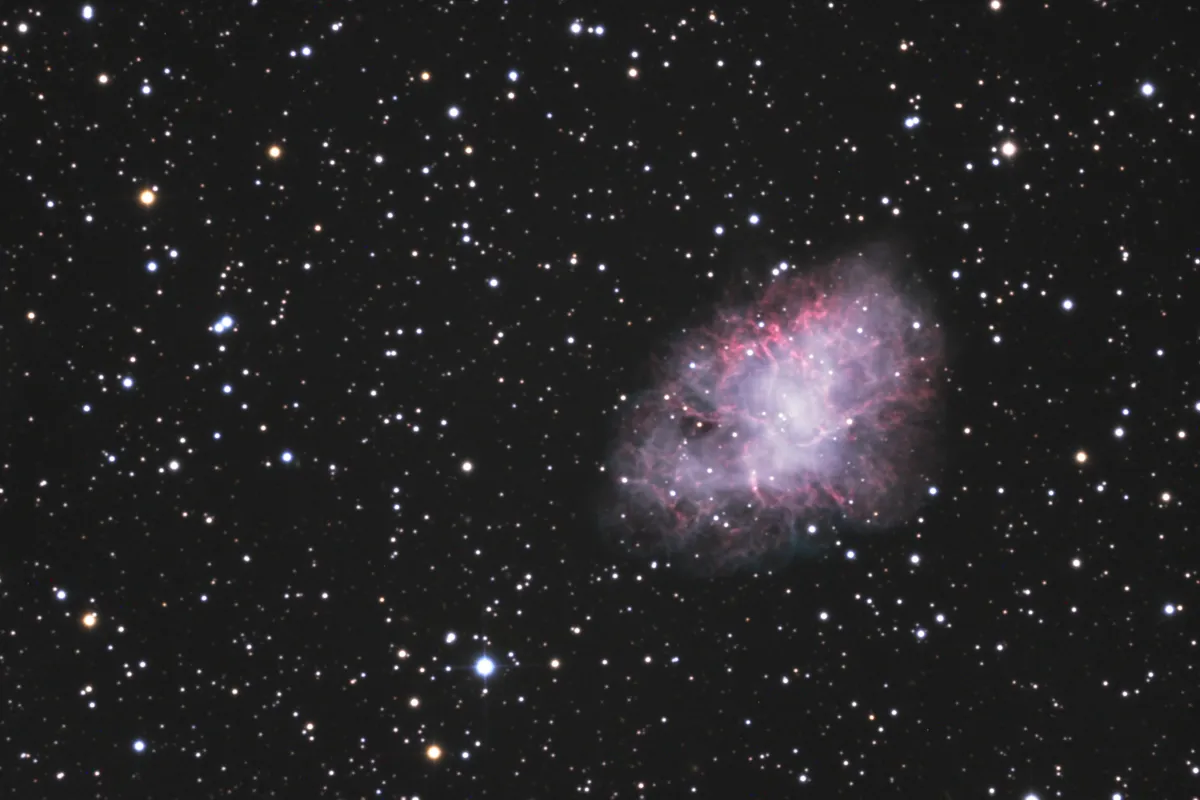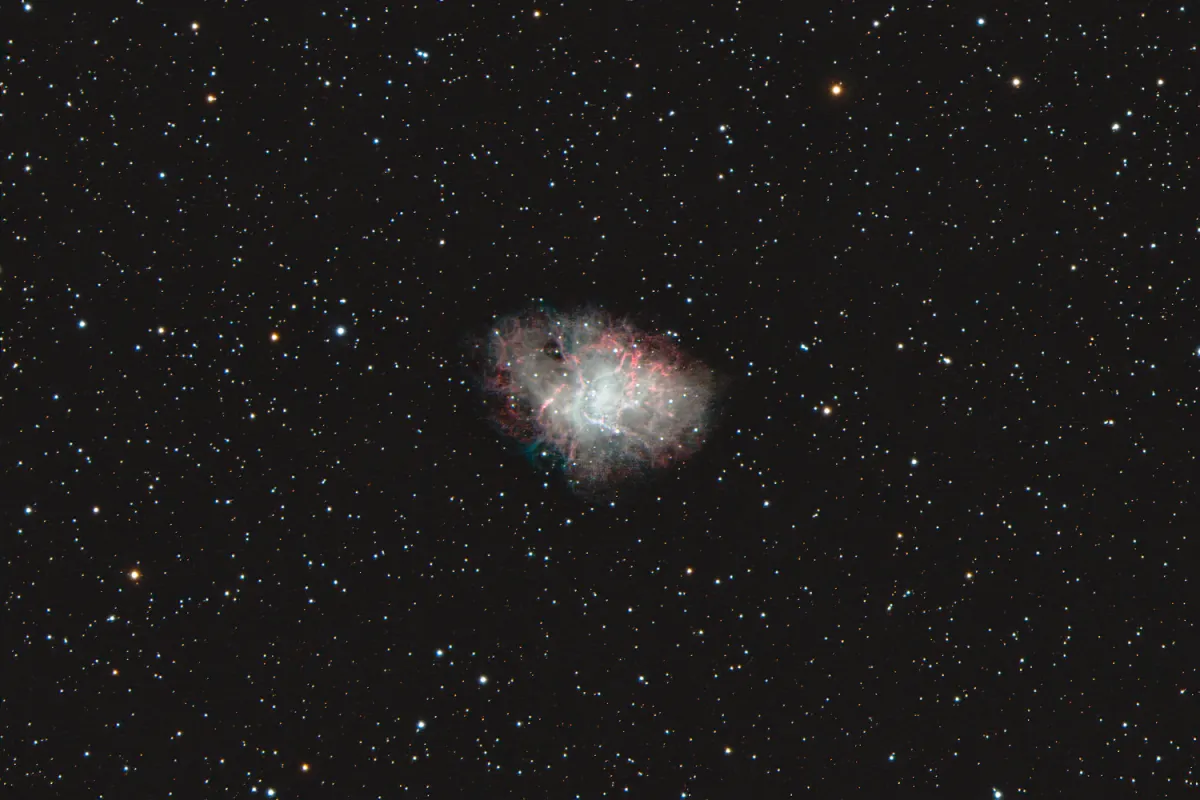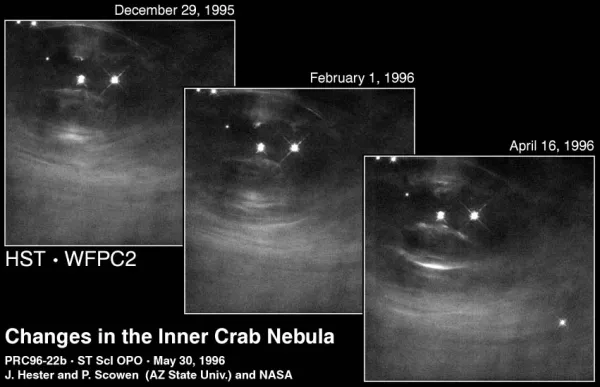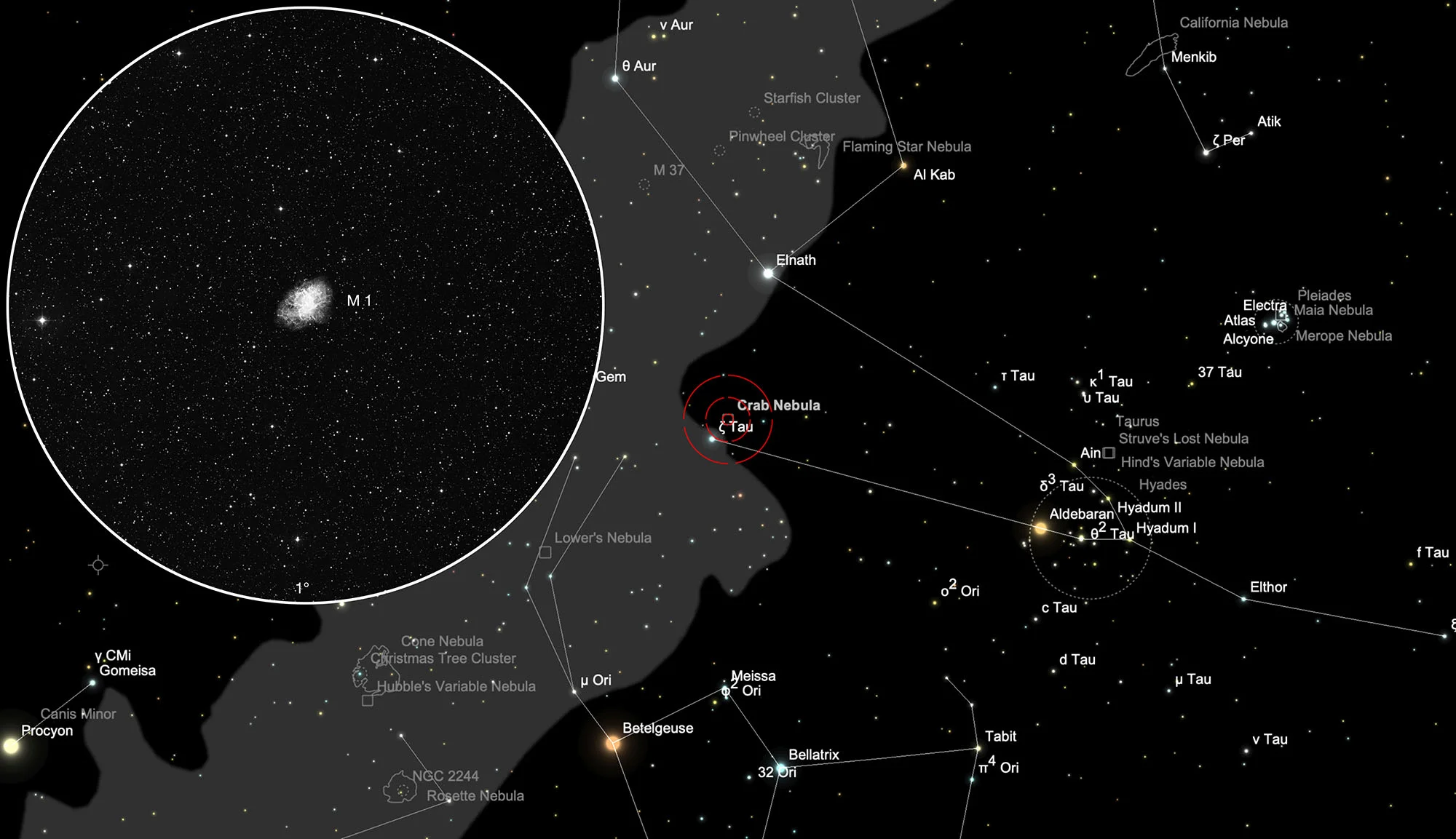Crab Nebula (Messier 1)



Object Description
Messier 1 is one of the most striking and both historically and physically best-documented supernova remnants known. It is often referred to as the Rosetta Stone of Astronomy as it serves as a key object in understanding numerous supernovae and other phenomena.
The chronicles of medieval China contain an interesting account of a «guest star» that appeared on 4th July 1054 AD near ζ Tauri. According to this report, this new star was as bright as Venus, shone in reddish-white light and could even be seen with the naked eye for 23 days during the day. This new star was still visible for two years. Similar reports and rock drawings of the crescent moon with a bright star next to it are known from other peoples, such as the Indians of North America. There are no records of this supernova in Europe, presumably because the prevailing Catholic Church in the Middle Ages did not tolerate such events. Strange, because the supernova of 1006 in the constellation Lupus was mentioned by a Swiss monk in his contemporary records. [4]

The visually 8.2 mag bright nebula that emerged from this medieval supernova was first discovered by the English physicist and amateur astronomer John Bevis in 1731. Around 27 years later, when Charles Messier observed the return of Halley's Comet in 1758, he encountered the same nebula independently of Bevis. Upon seeing the diffuse nebula, which looked almost like a comet, Messier had the idea of compiling a catalog so that future astronomers would not mistake it for comets. Lord Rosse noticed the outer filament structure of the nebula for the first time in 1844 and compared it with the legs of a crab, whereupon he called M 1 Crab Nebula. Of course, none of these astronomers had any idea that this was the remnant of the 1054 supernova. [4]
It was a long time before C. O. Lampland of the Lowell Observatory studied a series of photo plates from the 42 inch reflector in 1921 and noticed a movement inside the nebula. Soon he had shown that the Crab Nebula expanded slowly. The speed of expansion of the nebula varied in different ways areas, on average it is about 0.2 arcseconds per year. Since M 1 is a very irregular object, it is not very easy to determine the distance of the nebula and from this the speed of expansion and the age 5400 to 7000 light years and an enormous expansion speed of 1'800 km/s one calculated a possible age of the nebula of about 900 years. The calculated diameter of M 1 is about 10 light years. [4]
Later, due to this high rate of expansion, a supernova remnant was suspected, especially since the theory of supernovae and neutron stars became popular around the 1930s. Although this SNR (SuperNova Remnant) was identified with the Chinese «guest star» of 1054, the last evidence was missing - the neutron star.

In 1948 the Crab Nebula was identified as a strong radio source for the first time, and in 1963 X-rays were finally discovered with the help of an altitude rocket. The energy of the X-rays is about a hundred times more than that of the emitted visual radiation.
On the basis of numerous pictures through a polarization filter with a 200 inch reflector on Mt. Palomar, it was found in 1954 that the Crab Nebula shines with differently polarized light in different, relatively symmetrical areas. This indicated strong magnetic fields inside the nebula.
In 1968 radio astronomers in Green Bank, West Virginia, discovered a pulsar rotating 30 times per second in the centre of the Crab Nebula. The origin for these strong magnetic fields was found. A year later, at the Kitt Peak Observatory, Dr. Baade discovers that the pulsar is also visible in visual light. A supermassive star, a neutron star, the final evidence for identifying M 1 as an SNR was found. This neutron star has about 16 mag apparent brightness and about +4.5 mag absolute brightness - almost as bright as our sun in the visual spectrum and with a diameter of only 10 km. [4, 103, 113, 118, 120]

The images from the Hubble Space Telescope show that much more dynamic processes are taking place inside the Crab Nebula than previously thought. The nebula in the immediate vicinity of the pulsar changes its appearance within days. Strand-shaped structures move away from the pulsar at about half the speed of light. The pulsar itself is surrounded by a stationary halo that temporarily changes its luminous intensity. The effects of two polar jets moving along the axis of rotation around the pulsar are also visible. The most dynamic trait is a small knot that dances around in such a way that it has been nicknamed Dancing Sprite. [121, 127, 170]
| Designation | NGC 1952 |
| Type | SNR |
| Right Ascension (J2000.0) | 05h 34m 31.9s |
| Declination (J2000.0) | +22° 00' 52" |
| Diameter | 6 × 4 arcmin |
| Visual magnitude | 8.4 mag |
| Metric Distance | 2.001 kpc |
| Dreyer Description | vB, vL, E 135° ±, vglbM, r |
| Identification, Remarks | h 357; GC 1157; M 1; LBN 833; Sh2-244; CED 53; Taurus A; Crab nebula |
Finder Chart
The supernova remnant of Messier's number one is located about one degree northwest of the 3.0 mag bright star ζ Tauri, which is the southern horn of Taurus. It is easy to find due to its special location. The best time to observe M 1 is August to May, when the constellation Taurus is highest at night.
